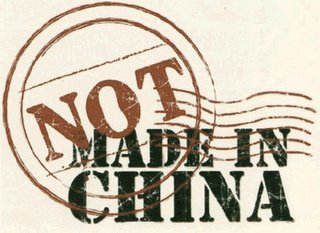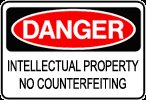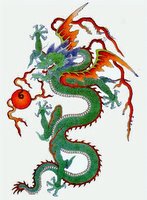Monday, 20th of March, the IP in China conference was held in London. This one-day-programme was packed with presentations on Chinese IPR Law and instructions for companies on how to protect their IPRs in China.
Most of the speakers said that China was doing a lot to improve IPR in China. And that many non-Chinese Small to Medium sized companies did not do their homework enough, sometimes even didn’t file any IPR. Beside this, however, there are still problems that need to get addressed.
Below you’ll find the first installment of a series on this event:
Connie Carnabuci, partner of Freshfield Bruckhaus Deringer in Hong Kong, started with a presentation about how to develop an effective IPR strategy. She said that doing business in China entails not only the problem of expatriating profits from China but also IPR challenges. What is China doing to fix this problem? China uses a two pronged approach:
- Propaganda (general public IPR awareness campaigns);
- Let domestic companies drive up the value chain by using IPR. The Chinese government came up with a IP plan that is focusing on protecting IPR in domestic companies.
Carnabuci:“Domestic need for stronger IPR protection is the driving force , not just an incentive to attract foreign investment.”
An action plan is announced IPR Protection for 2006. It exists out of:
- Draft, formulate and revise 17 rules and measures;
- Draft, improve and revise 6 judicial interpretations, including the IPR aspects of unfair competition law;
- 7 dedicated campaigns on IPR law enforcement; There will be a white paper about a dedicated IPR campaign published on 20th of April.
Carnabuci gave a lot of statistics which showed the phenomenal growth of IPRs in China. Beside, she gave some handy aspects of Chinese IPR law such as the hierarchy of laws:
The hierarchy of objective law in China is:
National People’s Congress = laws;
State Council = implementing regulations;
Supreme People’s Court = Interpretations, Provisions;
High People’s Courts = Opinions, Guidelines;
Government Agencies eg Patent Office = Notices, Implementing rules;
Government Ministries = Rules;
Administrative Authorities (national, regional & local)= Regulations, Provisions.
Litigation
Carnabuci gave an overview of which People’s Courts deal with IPR:
Supreme People’s Court (1) (Third Civil Division IP);
High People’s Court (31) (Third Civil Chamber IP);
Intermediate People’s Courts (346) Third Civil Chamber);
Primary People’s Court (3135);
People’s Tribunals (20.000).
Administrative enforcement
And if you don’t choose for litigation you can choose for the administrative route. Carnabuci summed up all Administrative Authorities. In case of Patents these are the:
- State Intellectual Property Office (SIPO);
- Provincial Intellectual Property Office;
- Local Intellectual Property Office.
In case of Trade Marks these are the:
- State Administration for Industry & Commerce (SAIC);
- Provincial AIC;
- Local AIC.
For Copyright the Administrative Authorities are the:
- National Copyright Authority of China (NCAC);
- Provincial Copyright Administration;
- Local Copyright Administration.
Unfair competition is dealt with by the:
- Fair Trade Bureau under SAIC.
Trading standards are dealt with by the:
- Quality Standards Supervision Bureau.
And for Import/Export the administrative authories are:
- Customs Authorities.
Features of different IPRs in China:
Copyright registration is not needed, according to the ‘no formalities provision’ of the Berne Convention to which China is a signatory, but it can be helpful to establish prima face evidence, for example ownership.
Trade Marks in China do not protect sounds nor smells.
Well known marks are only recognised in 2001, but they were only well known marks if they are well known in China. This is changing in the last 12-18 months.
You can use a non-Chinese name, but it will not be recognised in China. Hopefully 2006 will bring an amendment that will change this. Bi-langual strategy was first adopted by Goldman Sachs. Its often recommendable to pre-empt the market and register defensively.
Nowadays .com.cn and .cn can be registered by an offshore company
Criminal enforcement
Carnabuci used a rhetorical quesion to answer if China was using the criminal enforcement route enough: how much criminal enforcement was used in the jurisdications of the conference attendees when it concerned IPRs?
Carnabuci talked about multiple layers of IPR protection measures. You can distinguish product-, process- and legal protection mechanisms:
Product protection mechanism: Microsoft learned the hard way that the hologram that was developed especially to protect software against copying was copied itself;
Process protection mechanism: no one person has all the keys, part of the product is produced offshore, close circuit tv, properly enumerating employees/let them study abroad to develop loyalty, psychological screening, visibility of IPR by senior management.
An unorthodox way to deal with infringement is to buy the defendant’s factory. Carnabuci has seen it happening twice.
Legal protection: think IP filings and non-disclosure agreements
Forum shopping
Choice of forum can be of crical importance in China. As a plaintiff you choose between the:
- Place of infringement; place of manufacture; distribution chain (sue distributor as first defendant and bring the case to favourable forum); Advertiser.
- Defendant’s domicile; Search defendant’s subsidiaries/branches.
If you want an interlocutory injunction you’d better not go to Beijing, because the court did not once allowed one. Interlocutory injunctions are often given in the places of infringements.
Interim relief
There can be a preliminary injunction in the case of irreparable harm/urgency or;
Security required or;
Timing of court’s ruling: 48 hours.
No appeal is possible. You can request for a review, which, however, has never been overturned.
Civil remedies
In China the plaintiff can ask for an injunction and for damages.
Damages:
-loss suffered from infringement
-profits (based on period of trading, pricing, production capacity)
-multiple of licensing fee
-statutory damages, ceiling RMB 500,000, US$ 60.000
Destruction
Apology in public
Which Routes?
This depends on the complexity of the IPR dispute and the scope of the license. It can be too difficult for administrative law, because many judges have had military or government trainings, but have not studied law. This, however, is changing.
If a company has multiple IPRs than it is ending up at different agencies. In this case litigation can be more handy. If you choose for the administrative route, evidence accepted by the administrative authorities can be used in case of litigation.











